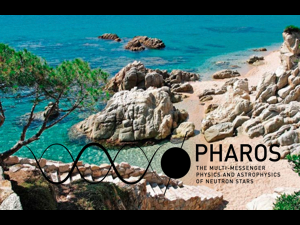Speaker
Ms
Marcella Wijngaarden
(University of Southampton)
Description
One of the challenges affecting the study of neutron star cooling is obtaining the interior temperature from observations of surface emission. The relation between surface temperature and interior temperature is set by the heat conducting properties of the thin outer envelope, which are highly sensitive to chemical composition. Most state-of-the-art cooling models consider the envelope to consist of chemically pure layers separated by narrow transition bands driven by diffusive mixing. However, diffusion can drive elements to depths where the density and temperature are sufficient to ignite nuclear burning, thus changing the composition and conductivity. We show how (diffusive) nuclear burning can alter the heat conduction and chemical composition over time and how this affects the interpretation of observed neutron star cooling behaviour. We find that, for some compositions,(diffusive) nuclear burning in the envelope can produce a non-negligible heat flux for neutron stars in quiescence after accretion outbursts, and therefore these stars may not be passively cooling. Finally, we discuss the potential contribution of (diffusive) nuclear burning to the unknown shallow heating mechanism that is often invoked to explain large observed temperatures after accretion outbursts.
Primary author
Ms
Marcella Wijngaarden
(University of Southampton)
Co-authors
Prof.
Craig Heinke
(University of Alberta)
Prof.
Daniel Patnaude
(Smithsonian Astrophysical Observatory)
Prof.
Dany Page
(Universidad Nacional Autónoma de México)
Dr
Mikhail Beznogov
(Universidad Nacional Autónoma de México)
Dr
Philip Chang
(University of Wisconsin-Milwaukee)
Dr
Wynn Ho
(Haverford College/University of Southampton)

